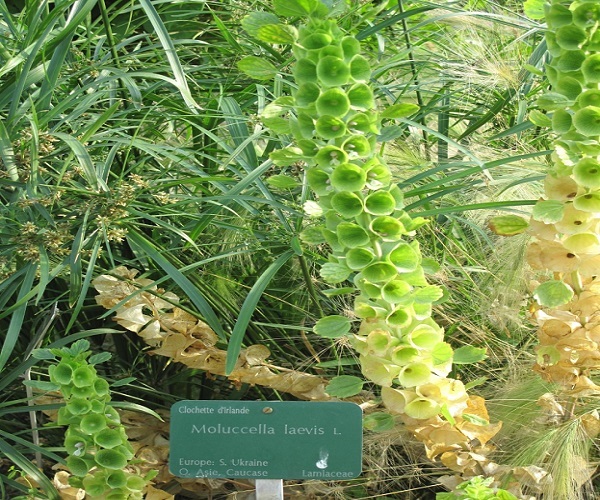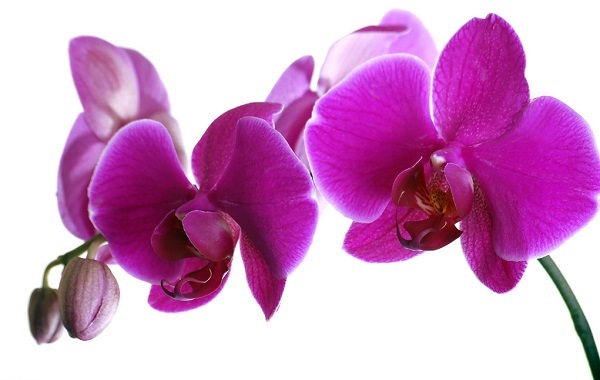What if orchids don't blossom?

1. Lighting
Light is the main factor to promote the bud formation of orchid plants. Flower leaves are soft and moderate green, indicating normal light; dark green and soft leaves, indicating the need for more light; yellowish leaves, indicating less light.
2. Temperature
To promote orchid flowering, it is necessary to make the temperature difference between day and night about 10 ℃, that is, the temperature of 18 ℃ ~ 21 ℃ in daytime and 7 ℃ ~ 10 ℃ at night grows best and blossoms more. The high temperature at night will soften the orchid leaves and peel off the flower buds. Too low temperature can cause blind buds and spots on the leaves. When it is damaged by low temperature during flowering, the flowers will appear brown spots.
3. Watering
The amount of watering is also the main condition for orchid flowering, and the moisture should be well controlled. A lot of water will make the orchid plant grow, but it is not easy to grow buds.
4. Apply thin fertilizer frequently
Orchids like light soil fertility, so when fertilizing orchids, we should keep the principle of "applying thin fertilizer frequently" and apply light fertilizer once a month. At the same time, in order to speed up the flowering of orchids, a little potassium dihydrogen phosphate or phosphate fertilizer can be properly applied to promote plant flowering and budding.
What if orchids don't blossom?
There are many reasons why orchids do not bloom. Orchids need to be investigated and analyzed. For a normal adult orchid, as long as it reaches more than two or three conjoined plants, it can blossom under normal circumstances (a small number of orchids can also blossom, and cold orchids with thick roots and fine leaves often have this phenomenon).
The main results are as follows: 1. the plant of orchid is still small and does not have reproductive genes. Some young seedlings that have not yet formed pseudobulbs can bloom only after two years of vegetative growth to form pseudobulbs, and then germinate new shoots two or three times, and the branches are three generations in the same house.
2. Scattered planting will destroy the transmission habit of reproductive genes of orchids from generation to generation, so orchids should be planted in clusters, less leaves per plant, less ash accumulation of organic matter and no active reproductive genes. Generally speaking, it is difficult to blossom without three generations of pseudo-bulbs in the same house.
3. Improper dry and wet, spring and summer and autumn are the vegetative growth periods of orchids (but need to avoid plum rain and torrential rain). If autumn is too thousand, it will make vegetative growth. Winter is its dormant period, which should be on the dry side. If it is too wet, it is easy to make the basin soil freeze and expand, squeeze the roots, affect the new shoots of the following spring and summer, and affect its normal reproductive growth.
4. The light is too little, and the accumulation of organic matter is limited, which can not supply the needs of reproductive growth. Although Lanhuo is a shady flower, it does not mean that it does not need time. It only avoids direct and long light. But need to diffuse, scattered light (semi-shade). Plants that tend to grow in the shade have dark green leaves, but they are more difficult and less flowering, while those growing in the south and mid-summer shade are slightly yellowish-green, but with more flowers, and are gaudy and fragrant.
Another situation is that orchids cannot blossom for their own special reasons, or a very small number of orchids do not like to blossom. This phenomenon has appeared in various orchid species, and I have also encountered: in 2004, a vegetarian Jian Lan, which came down the mountain, has been cultivated in this garden for six or seven years, and it has developed to more than a dozen pots. I have never seen flowers until now. This is probably the sterility of plants (orchids).
[the reason why orchids don't blossom] what if orchids don't bloom?
There are many reasons why orchids do not bloom. Orchids need to be investigated and analyzed. For a normal adult orchid, as long as it reaches more than two or three conjoined plants, if it is cultivated properly, it can blossom under normal circumstances, but the actual orchid is not very easy to raise. In the process of orchid cultivation, it is easy to rot the root and rot the stem or the orchid will not blossom if handled improperly. In general, if the stem buds of orchids rot, do not deal with them, then the roots and yellow leaves will rot, and the orchids will not blossom in the end.
There are five reasons why orchids do not bloom. 1. The orchid plant is still small and does not have flowering.
The plants of orchids are still small and do not have reproductive genes. Some young seedlings that have not yet formed pseudobulbs can bloom only after two years of vegetative growth to form pseudobulbs, and then germinate new shoots two or three times, and the branches are three generations in the same house.
2. Orchid ramet destroys fertility genes.
Ramet planting will destroy the transmission habit of reproductive genes of orchids from generation to generation, so orchids should be planted in clusters, less leaves per plant, less ash accumulation of organic matter and no active reproductive genes. Generally speaking, it is difficult to blossom without three generations of pseudo-bulbs in the same house.
3. Orchids do not blossom: the environment does not adapt.
Improper dry and wet, spring and summer and autumn is the vegetative growth period of orchids (but need to avoid plum rain and rainstorm), if the autumn is too thousand, it will make vegetative growth. Winter is its dormant period, which should be on the dry side. If it is too wet, it is easy to make the basin soil freeze and expand, squeeze the roots, affect the new shoots of the following spring and summer, and affect its normal reproductive growth.
4. Orchids do not blossom: too little light
The light is too little, and the accumulation of organic matter is limited, which can not supply the needs of reproductive growth. Although Lanhuo is a shady flower, it does not mean that it does not need time. It only avoids direct and long light. But need to diffuse, scattered light (semi-shade). Plants that tend to grow in the shade have dark green leaves, but they are more difficult and less flowering, while those growing in the south and mid-summer shade are slightly yellowish-green, but with more flowers, and are gaudy and fragrant.
5. The orchid itself does not blossom
Orchids can not bloom for their own special reasons, or a very small number of orchids do not like to blossom. This phenomenon has appeared in various orchid species, and I have also encountered: in 2004, a vegetarian Jian Lan, which came down the mountain, has been cultivated in this garden for six or seven years, and it has developed to more than a dozen pots. I have never seen flowers until now. This is probably the sterility of plants (orchids).
What if the orchid does not blossom? 1. Cultivate strong seedlings
In general, the spring orchid for ornamental flowers cannot be divided into single seedlings for propagation. It is best for three seedlings to be connected to the pot, so that strong seedlings can be cultivated.
2. Enhance the illumination
Light is the main factor affecting the growth and flowering of orchids. Plants rely on sunlight for photosynthesis to produce indispensable nutrients for their growth. The growth of Cymbidium and the formation of flowers need sufficient light. Sunlight can help orchid leaves carry out photosynthesis, create "food" and support the growth and flowering of orchid seedlings. In addition to summer and early autumn, Chunlan can not let direct sunlight in other seasons, which can not only make the orchid seedlings healthy and strong, but also strengthen the bulbs and promote the propagation of buds. Orchids with exuberant growth are easier to draw buds.
3. Master watering
Water is one of the material bases for plant growth, but there should be a limit to the amount of water. Watering should not be fixed for a fixed time, but should seize the opportunity. If it is dry, it will be watered thoroughly, and when the orchid basin is dry, it will be watered. This is the basic principle of watering. When watering, it should be noted that the temperature of the water should be similar to that in the orchid basin of the orchid place as far as possible. Summer and early autumn can be watered in the morning and evening, while in winter at noon, the aim is to reduce the temperature difference between water and orchid pots. Spring orchids should generally be watered during the growing period, and watering should be strictly controlled before flower buds are formed.
- Prev

The planting method of shell flower
1, reproduction: shell flowers can be sowed to prevent reproduction, generally in spring, summer, autumn, if the need for uniform supply of flowers, easy to watch, can be sown in batches. 2. Potted soil: the size of the flowerpot depends on the number of seeds. The seeds are triangular. Usually 10-15 seeds can be planted in pots with a diameter of 15cm.
- Next

What is the reason why orchids do not bloom?
1. Seed seedlings and tissue culture seedlings do not necessarily blossom even if they have been cultivated for many years, just like other plants, for example, fruit trees cannot blossom and bear fruit until a certain age, and orchids cannot blossom and seed until a certain age. 2. The species differences among orchid species are different.
Related
- Fuxing push coffee new agricultural production and marketing class: lack of small-scale processing plants
- Jujube rice field leisure farm deep ploughing Yilan for five years to create a space for organic food and play
- Nongyu Farm-A trial of organic papaya for brave women with advanced technology
- Four points for attention in the prevention and control of diseases and insect pests of edible fungi
- How to add nutrient solution to Edible Fungi
- Is there any good way to control edible fungus mites?
- Open Inoculation Technology of Edible Fungi
- Is there any clever way to use fertilizer for edible fungus in winter?
- What agents are used to kill the pathogens of edible fungi in the mushroom shed?
- Rapid drying of Edible Fungi

